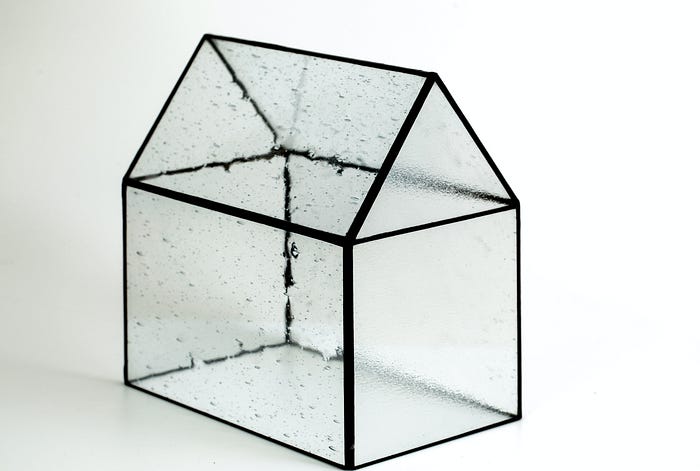

6 Holy Commandments of Ethical UX
source link: https://uxplanet.org/6-holy-commandments-of-ethical-ux-6cb0034b710
Go to the source link to view the article. You can view the picture content, updated content and better typesetting reading experience. If the link is broken, please click the button below to view the snapshot at that time.
6 Holy Commandments of Ethical UX

With the rise of dark UX, particularly in the last few years with technology becoming more and more entwined in our daily lives, we must seek to consider our ethical considerations when creating user experiences. Exploiting the user for short term gain is to create a bridge not just as a brand, but as a designer between yourself and the user, and if anything spells demise for a product, it’s that.
In this article we’ll try to understand what we can do, our responsibility as UX designers, to create ethical designs that give our users what they need, without trickery or deceit, in return gaining the affection and loyalty of your users!
#1 Empathy

You can’t create user experiences without empathy, but whether or not you use that empathic understanding of your users for their gain, or for yours, is totally in the palm of your hands.
Utilising empathy requires understanding what’s going on inside your users head, what makes them click and what creates conversions, and it’s easy to see how you can utilise that knowledge for material gain.
At the end of the day, it’s you as the designer and business who loses out by not having your user as the top priority, even if you ignore shaving off your ethics for profit, remember that there is a flurry of cognitive biases that make us as people value businesses that value us. We win, they win, everybody wins.
#2 Transparency

Dark UX has a habit of keeping things hidden away, and with the explosive growth of the internet it’s been hard to hide away the lies and deceit that many have employed for their own benefit.
This does NOT mean not working for your own gain, it means telling your users what’s going on, and just being honest with them.
At the end of the day, if you’re telling little lies to your users and hiding away important information that affects them, it will add up, and it will only cause disdain and the loss of a user.
#3 Value

Focusing on what you can give rather than get paradoxically results in you getting more.
Value is obviously core to a product, as without value you’ll never leave the floor, but there are different types of value — Monetary, Personal, Cultural & Selfless
Most products provide one or two forms of value, but if you can focus on a single type as a designer, focus on Personal Value; value that gives our users what they want and what they need.
I’ll be exploring these types of values more in the future, so drop a follow so you stay in the loop!)
#4 Influence

Whether you are cognizant of it or not, every single element you design has its influence on the user. This is incredibly powerful, as it allows us as designers to dictate actions that take place within the boundaries that we create.
User’s may make mistakes sometimes (Usually, due to our fault as designers, not theirs), but they are intelligent people, who may fall once or twice to dark UX, but will clue up by the third time, and you’ll be bearing the responsibility.
If you say goodbye to trust, you say goodbye to the user.
#5 Privacy

Privacy has been a monumental issue in the last few years with so many changes and issues with security, you’re barely scratching the surface even when you do a quick google of ‘online privacy violation’, it’s scary.
The damage that these huge organisations suffered from these missteps were irreversibly huge, the users had been lied to and they found out.
In an increasingly connected world, having your privacy becomes increasingly important, so as designers let’s not become a part of the problem and work towards respecting boundaries.
#6 Respect

Every part of Ethical Design culminates in Respect.
If you respect the user, they will respect you. It’s the root of all success, and the father of ethical thinking! Giving our users freedom, space, and genuine all around value, creates a sense of nigh unbreakable respect.
The world of marketing has also massively shifted, and the value within word of mouth and recommendations is MONUMENTAL, and you can tap into that completely for free, by simply respecting the user.
In Summary
With this now you can be the light that shines, creating for others instead of for self, in turn garnering the respect and admiration of them, generating greater conversions, improving brand images, and raising the loyalty of our users that you would never achieve otherwise.
If you enjoy my content, you can Subscribe to email updates.
By becoming a Medium Member, you get unlimited article access & Support Creators Like Myself!
Check out my UX email newsletter, with Digestible Knowledge Every. Wednesday.
I love connecting with new people, find me on Linkedin and Twitter!
You can find all my links and resources here at DesignFour UX Masterlist.
If you enjoyed my content, Drop a Follow, it keeps me writing! Much Love!
Recommend
About Joyk
Aggregate valuable and interesting links.
Joyk means Joy of geeK